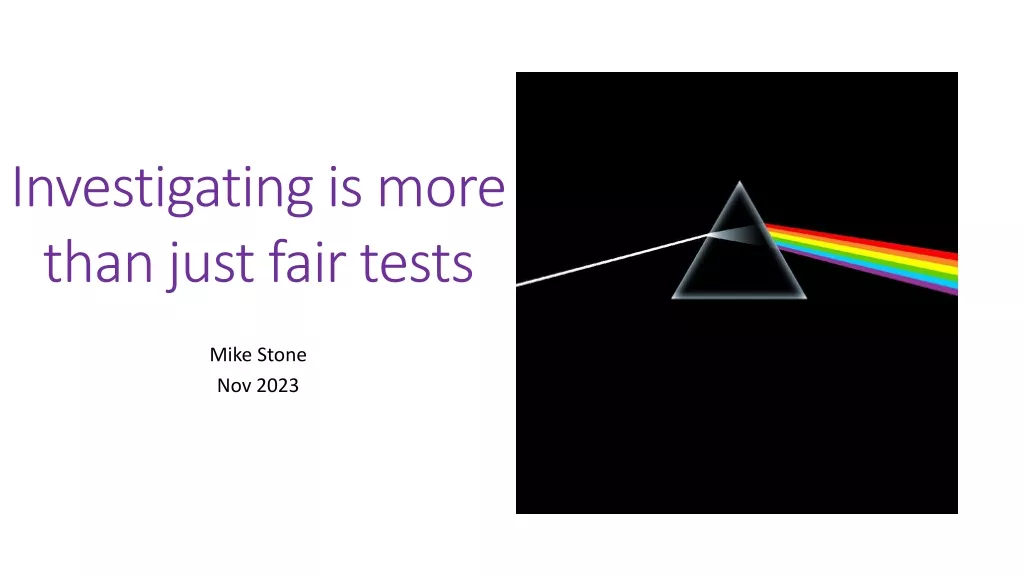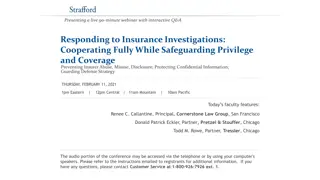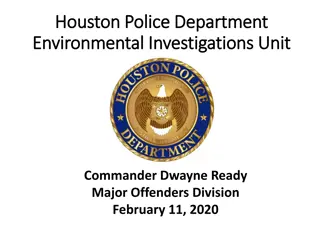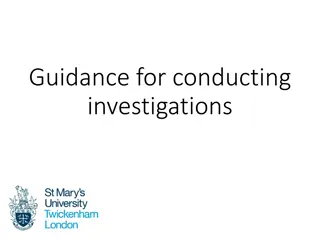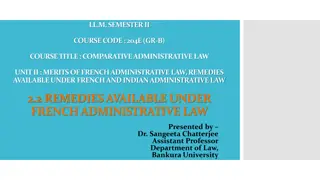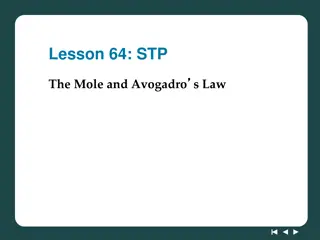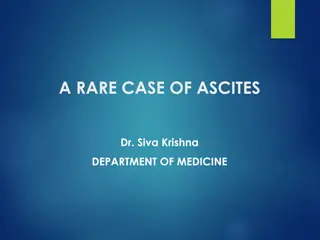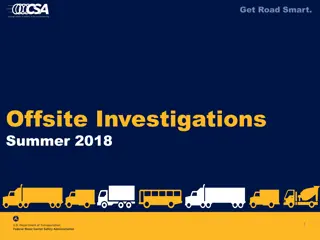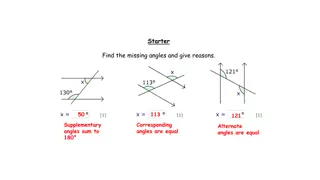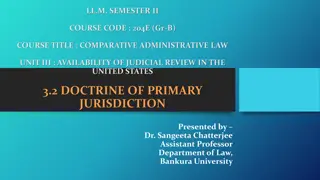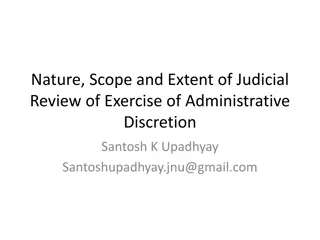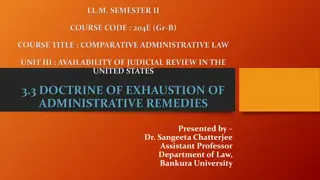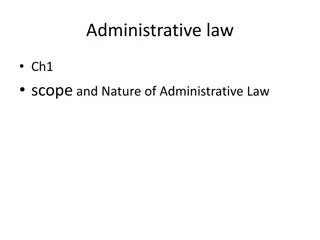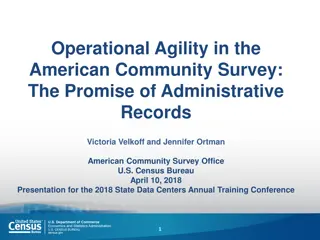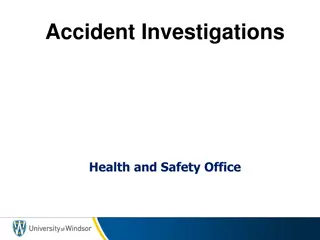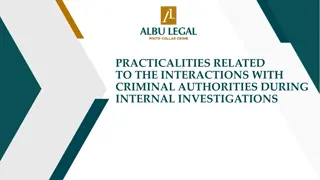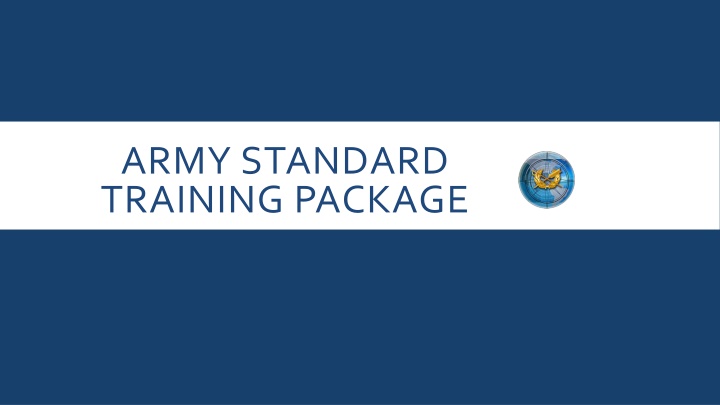
Administrative Investigations and AR 15-6 Procedures in Army Regulations
Explore the Army's standard training package along with administrative investigations and AR 15-6 procedures. Learn about commanders' authority, regulations, and procedures for conducting investigations in the military. Stay current with key information and guidelines as of January 2025.
Download Presentation

Please find below an Image/Link to download the presentation.
The content on the website is provided AS IS for your information and personal use only. It may not be sold, licensed, or shared on other websites without obtaining consent from the author. If you encounter any issues during the download, it is possible that the publisher has removed the file from their server.
You are allowed to download the files provided on this website for personal or commercial use, subject to the condition that they are used lawfully. All files are the property of their respective owners.
The content on the website is provided AS IS for your information and personal use only. It may not be sold, licensed, or shared on other websites without obtaining consent from the author.
E N D
Presentation Transcript
ARMY STANDARD TRAINING PACKAGE
ADMINISTRATIVE INVESTIGATIONS Commanders have the inherent authority to investigate any matter under their responsibility, unless otherwise prohibited or limited, if undertaken for the purpose of furthering the good order and discipline of their command 1. Do them Keys to Success: 2. Do them right 3. Do them right away Current as of January 2025
AGENDA/REFERENCES AR 15-6, Procedure for Administrative Investigations and Boards of Officers, 1 April 2016 Procedures Appointing Authority Conducting the Investigation Approval Authority Additional Administrative Considerations Current as of January 2025
ARMY REGULATION 15-6 Provides guidance on the conduct of investigations General and specific application to various investigations Use AR 15-6 when: Whenever an appointing authority needs a complete investigative report containing facts and recommendations When regulations require it Current as of January 2025
WHEN REGULATIONS REQUIRE IT AR 735-5, Property Accountability Policies AR 638-8, Army Casualty Program Current as of January 2025
AR 15-6 PROCEDURES A Commander s information tool to collect facts, make findings, and obtain recommendations Three procedures Preliminary Inquiry Assess the nature and size of a problem, identify witnesses, summarize initial statements and determine the necessity and scope of follow-up investigations. Administrative Investigations Flexible, less time and resource intensive investigation than a Board of Officers. Board of Officers More time intensive. Respondent designated and provided substantial due process rights. Current as of January 2025
WHO MAY CONVENE: THE APPOINTING AUTHORITY Board of Officers GCMCA/SPCMCA Any general/flag officer Any commander, deputy commander, or special, personal, or principal staff officer in the rank of colonel (lieutenant colonel if assigned to a slot authorized a colonel) GS-14 (or above) agency head or division chief Principal Deputies, Assistant Deputy Chiefs of Staff, and Assistant Secretaries of the Army at HQDA Current as of January 2025
WHO MAY CONVENE: THE APPOINTING AUTHORITY Administrative Investigations & Preliminary Inquiries: Anyone who can appoint a board of officers Any commander Special, personal, or principal staff officer or supervisor in the grade of major or above Current as of January 2025
HOW TO APPOINT: THE APPOINTMENT MEMORANDUM Written appointment for administrative investigations and boards of officers Describe the facts as they are known at the time Be specific in what the investigating officer is to accomplish scope! Give adequate guidance and special instructions Current as of January 2025
WHOM TO APPOINT: THE AR 15-6 INVESTIGATING OFFICER Grade Commissioned/warrant officer GS-11 and above Senior to person under investigation Impartial Best qualified by reason of education, training, experience, length of service, demonstrated sound judgment and temperament E-7 if military exigencies exist Assistant Investigating Officers are allowed Current as of January 2025
CONDUCTING THE INVESTIGATION Mandatory legal brief Must be thorough and impartial Using an investigative plan is a must Who, what, where, when, why, and how Rules of evidence generally do not apply but evidence must be relevant and material Limitations: Privileged communications, evidence of polygraph only with consent of subject, no involuntary admissions, no bad faith searches, MRE 412 See AR 15-6, para. 3-7 for full explanation of evidentiary limitations Current as of January 2025
CONCLUDING THE INVESTIGATION Facts Clear, concise, and readily deduced from the evidence in the record should refer to a piece of evidence Findings Preponderance of the evidence (more likely than not) Recommendations Consistent with the findings Current as of January 2025
LEGAL REVIEW Required for All administrative investigations Preliminary inquiries where follow-on adverse administrative action is contemplated Determine Whether the proceedings comply with legal requirements and the appointment memo What effects any errors have Whether sufficient evidence supports the findings Whether the recommendations are consistent with the findings Current as of January 2025
APPOINTING/APPROVING AUTHORITY ACTION Appointing/approving authority may Approve as is Disapprove Return for additional investigation Make exceptions and substitutions Recommendations Treat just as findings: approving, disapproving, ro substituting them as necessary Become final agency decision once approved and thus may be released under the Freedom of Information Act Corrective action Current as of January 2025
ADDITIONAL ADMINISTRATIVE CONSIDERATIONS
FLAGS Mandatory for commander s investigations Subjects of AR 15-6 preliminary inquiry, administrative investigation, CDR s Inquiry Failure to flag is a regulatory violation An administrative action, not punishment Impose within 3 working days of: Suspect/Subject of investigation; or IO later suspects witness of misconduct Remove within 3 working days of: No adverse findings against Soldier; CDR decides to take no action against Soldier; or Different flag imposed Current as of January 2025
FOLLOW-ON ACTIONS Before adverse admin action based on 15-6:* Subject is given notice and a copy of the report of investigation; Subject has reasonable opportunity, no less than 10 days, to respond; and Commander must consider response, if submitted in a timely manner, before taking adverse action Implement approved recommendations Organizational corrections for the staff process *Only when adverse action does not provide its own procedural safeguards or subject is a field grade officer Current as of January 2025
REFERRAL OF ADVERSE INFORMATION Investigations containing adverse information regarding a commissioned officer (grade O-1 and abover) must be referred to that officer advising the officer of: Their ability to have a redacted copy and relevant portions Right to remain silent The adverse information may be uploaded into AAIP and provided to a promotion board The approving authority will consider their response At least 10 business days to respond Current as of January 2025

